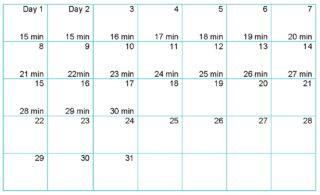
Let’s face it, many of us fall victim to spending a lot of time on our phones or tablets. We use them to stay connected through social media, pay our bills, or talk to someone on the other side of the world, but have you ever considered how all of this technology can help you to stay healthy? It’s true, there are lots of apps out there that can help nudge or coach you to be physically healthy, but have you ever considered what apps can help with your mental and emotional health?
As the prevalence of mental health difficulties continues to grow, more and more apps are being developed to help keep you healthy in mind, body, and soul. Below are some of OHS’s favourites to help you check into your mental health on the go.
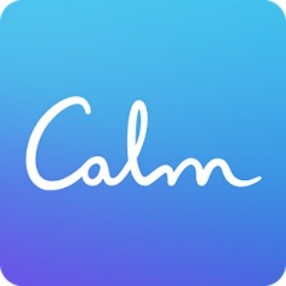 Calm:
Calm:
Calm offers gentle sounds to help block out external distraction and allow your mindfulness practice to take you to your happy place. The app and website use different themes from which the user can choose and then offers a variety of free meditations to help reduce anxiety, improve your sleep, and focus on your breath, to name a few. This app is sure to help you de-stress. Check out their website https://www.calm.com or download the app (compatible for both Apple and Android).
 Head Space:
Head Space:
It’s like a gym for your mind. Headspace was one of the first wellness apps to target mental health. It is another great app for those new to the art of mindfulness and meditation. The app offers a 10 level ‘course’ where the user is encouraged to practice the 10 minute classes daily to get into the habit of a daily practice. Visit the site, or download the app (compatible for both Apple and Android) https://www.headspace.com/.
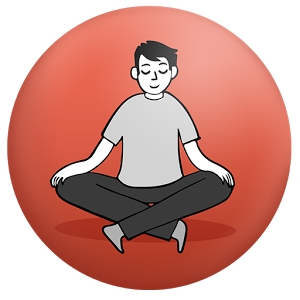 Stop Breath Think:
Stop Breath Think:
This all-encompassing lifestyle app is the perfect blend of mindfulness, meditation, and compassion building that is both user friendly and fun to use. Use it to de-stress and manage anxiety symptoms or just check-in with yourself. Explore the recommended meditations based on your current thoughts and emotions and track how your mood changes and see if you can find yourself in a more grounded state. Check them out online, http://www.stopbreathethink.org or try out their app, compatible for Android and Apple products.
 Happier:
Happier:
If you are looking to start out with mindfulness, but find meditative practices to be a challenge, Happier might be the app you are looking for. This app will assist you to become present and positive through your day. Receive inspiring quotes, take a meditative break, or share some positive moments in your day with the Happier community. Happier can also double as a gratitude journal, allowing you to record some positive moments from your day and become more resilient to negative thinking. Find it online: https://www.happier.com, or try the app and celebrate the good around you (compatible for both Apple and Android).

Breath2Relax:
This app acts as a portable stress management tool that offers instruction for diaphragmatic breathing or belly breathing. This breathing technique can help to decrease the ‘fight-or-flight’ response in the body as well as stabilize mood. The user can monitor their stress levels using touch screen technology. Download the app on your Apple or Android device, and learn how to manage your stress with your breath.
 Optimism:
Optimism:
This app is a great compliment to your in-office counselling, as it helps you to be mindful of your emotions and chart your moods. The app assists you in detecting patterns in mood and helps you to identify triggers that allow you to create a customizable wellness plan to improve coping strategies. The only downfall is that this app is only compatible with Apple products.
 ACT Coach:
ACT Coach:
ACT Coach is best used in conjunction with you face-to-face therapy. The app offers tools to identify personal values and to assist the user to take actions to move towards them. Log coping strategies or practice mindfulness, this free app will compliment your work with your therapist and help you live a values driven life. This app is compatible for both Android and Apple products.
Whether you check out one, or all of the above apps, it is important to remember not every app will appeal to everyone. There are lots more on-the-go resources out there that might be a better fit for you. If you find one you love, be sure to let us know.
![]()




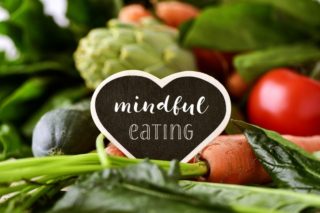
 In fact, most of us likely practice the opposite of mindful eating, we are more likely engaging in mindless eating. We lack awareness of how we fill our plate, or our portion size. We eat in front of the TV or computer, and we do not notice cues in our body signaling us that we are full. With mindless eating, most of us can consume an unnoticed 200-300 calories each day, which overtime can lead to unwanted weight gain. Consider this: have you ever been eating chips and went to put your hand in the bag, only to find it empty? Or have you ever eaten the last piece of crusty, dried out chocolate cake even though it tasted like cardboard?
In fact, most of us likely practice the opposite of mindful eating, we are more likely engaging in mindless eating. We lack awareness of how we fill our plate, or our portion size. We eat in front of the TV or computer, and we do not notice cues in our body signaling us that we are full. With mindless eating, most of us can consume an unnoticed 200-300 calories each day, which overtime can lead to unwanted weight gain. Consider this: have you ever been eating chips and went to put your hand in the bag, only to find it empty? Or have you ever eaten the last piece of crusty, dried out chocolate cake even though it tasted like cardboard?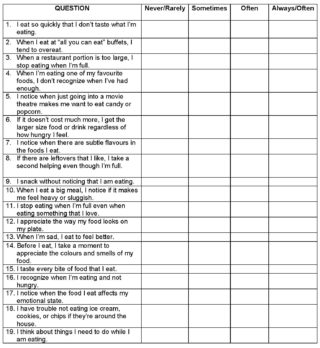







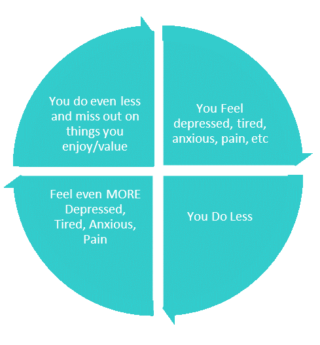 The trouble is that when we are facing depressive or anxious thoughts, going for a walk is not the first thing that comes to mind. For most people who suffer with mental health, it is quite the opposite: you may feel like doing less and avoid doing the things that are of value to you. The problem is, when you do less, you feel the impact of the symptoms even more and continue to miss out on living a meaningful life. This is a common cycle for most people, but it can be broken. Behaviour Activation (BA) can help disrupt the above stuck loops by introducing positive behaviours. Walking is an ideal behaviour to introduce as it has so many benefits for mental well-being. Improvements in mood and energy can be noticed almost immediately. Over time, many other benefits can be noticed, including:
The trouble is that when we are facing depressive or anxious thoughts, going for a walk is not the first thing that comes to mind. For most people who suffer with mental health, it is quite the opposite: you may feel like doing less and avoid doing the things that are of value to you. The problem is, when you do less, you feel the impact of the symptoms even more and continue to miss out on living a meaningful life. This is a common cycle for most people, but it can be broken. Behaviour Activation (BA) can help disrupt the above stuck loops by introducing positive behaviours. Walking is an ideal behaviour to introduce as it has so many benefits for mental well-being. Improvements in mood and energy can be noticed almost immediately. Over time, many other benefits can be noticed, including: